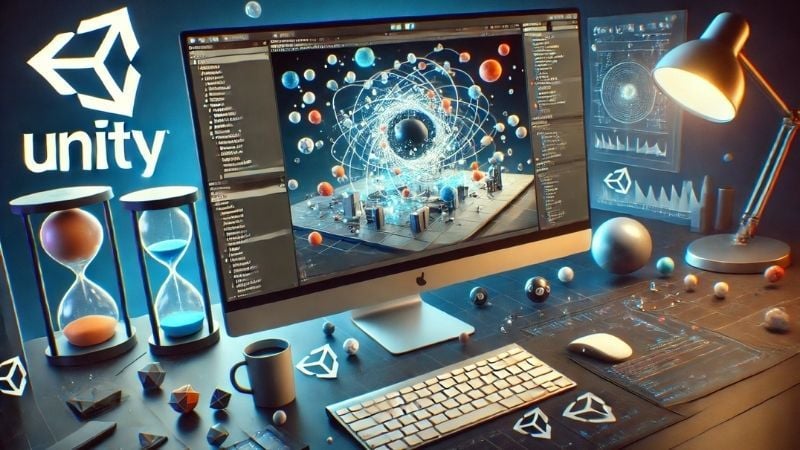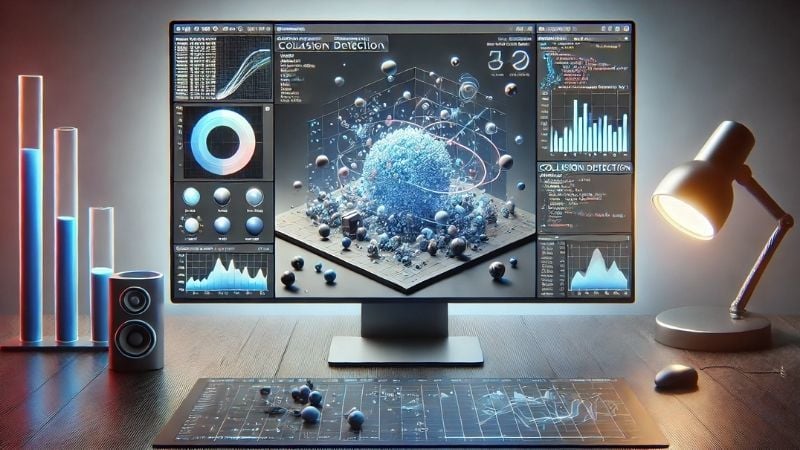What is the physics engine? Physics engines, which provide realism and interaction in the game world, are the basic building blocks of games.
In the gaming world, realism and interactivity have always been one of the most important elements for players. Nowadays, the physical realism of games is one of the most basic elements that draw players into a game, as well as advanced graphics and impressive stories. At this point “What is Physics Engine?” question arises.
What is the Physics Engine that Increases Realism in Games?
A physics engine is a software component used to simulate the laws of physics in games. It enables the application of real-world physics laws such as gravity, force, motion, collision and fluid dynamics in a virtual environment. Physics engines are a fundamental tool that makes the game world more realistic, interactive and more immersive for players.
The main purpose of physics engines is to ensure that objects and characters in a game behave realistically. For example, situations such as a box rolling when pushed, a car slipping while braking, or objects being thrown around during explosions are examples of realism that physics engines add to the game world. Physics engines not only provide visual realism, but also increase players’ interaction with the game world. Thanks to these engines, players can interact with objects around them in a more natural and dynamic way.
Physics engines basically perform two main functions: collision detection and dynamic simulation. Collision detection is used to determine whether an object collided with another object. For example, it is this system that calculates whether a ball hits a wall or not. Dynamic simulation, on the other hand, calculates how objects will move after a collision, their speed and rotation. These two components form the basis of physics engines in games.

So, if we have to ask the question why physics engines are so important in the gaming world, there are several main reasons. First, physics engines add realism to games. Just as you interact with an object in real life, a similar interaction is expected in the game world. Details such as a box moving when you push it or waves forming when you throw a stone into a puddle are examples of how physics engines make a gaming experience more believable. Secondly, physics engines increase players’ interaction with the environment. Situations such as a character jumping on a box in a platform game or collapsing a wall in an action game provide players with a more immersive experience. Third, physics engines offer game designers wide freedom. A dynamic physics system allows developers to create more creative mechanics and scenarios.
There are many different physics engines used in the game world. One of the most popular among them havok It is a physics engine. Havok is frequently used, especially in AAA-class games, and is known for offering realistic physics simulations. For example, Havok’s power is clearly seen in series such as “The Elder Scrolls” and “Assassin’s Creed”. Another popular physics engine is PhysX‘truck. This engine, developed by NVIDIA, attracts attention especially with its GPU-accelerated physics effects. Games such as the “Batman: Arkham” series and “Borderlands” were developed using PhysX. An open source option Bulletis very popular among indie game developers. Bullet’s influence can also be seen in major productions such as Grand Theft Auto IV and V. Unreal Engine’s Chaos physics engineattracts attention especially with its destruction effects and dynamic environmental simulations. The impressive power of this engine can be seen in games like Fortnite. Working integrated with the Unity game engine Unity Physicsstands out as another engine frequently used in indie games.

The areas of use of physics engines may vary depending on the game type. For example, while physical events such as explosions, collapsing structures and bullet effects are at the forefront in action games, issues such as vehicle handling, collisions and acceleration dynamics are important in racing games. In simulation games, details such as the aerodynamics of airplanes, the movement of ships on water, or the way towers collapse in a construction simulation are managed by physics engines. Additionally, in platform games, the character’s interactions with the environment (such as jumping, pushing, pulling) are one of the most basic areas of use of physics engines.
The development of physics engines has brought innovations and technological advances in the game world. Especially with the development of GPU acceleration and real-time computing technologies, physics engines have become capable of more complex and detailed simulations. For example, modern graphics systems such as ray tracing technology, when combined with physics engines, provide players with a more immersive experience. In addition, physics engines can be integrated with artificial intelligence to create more dynamic gameplay. For example, mechanics such as the reaction of an enemy after a collision or the adaptation of surrounding objects according to the player’s movement are made possible by the collaboration of physics engines and artificial intelligence.

In the gaming world, physics engines not only provide players with a realistic experience, but also open up a wide design space for developers. Game designers can develop creative and engaging mechanics using the tools offered by physics engines. For example, destructible environments, dynamic fluid simulations or complex puzzles are made possible thanks to physics engines. This allows the gaming world to appeal to a wider audience.
Physics engines will gain even more importance in the future. The role of physics engines will become even more critical, especially in virtual reality (VR) and augmented reality (AR) games. The ability of players to interact with the environment in VR depends on the accuracy of the physics engines. Additionally, with the development of cloud-based gaming technologies, it will be possible to run physics engines on much more powerful servers, allowing larger and more complex simulations.
As a result, the answer to the question of what is a physics engine can be defined as one of the basic building blocks of the game world. Physics engines provide a realistic and dynamic gaming experience, allowing players to become more immersed in virtual worlds. These systems, which offer developers a creative space, have an important place in game design. With future technological developments, the capabilities of physics engines will further expand and open new horizons to the game world.
